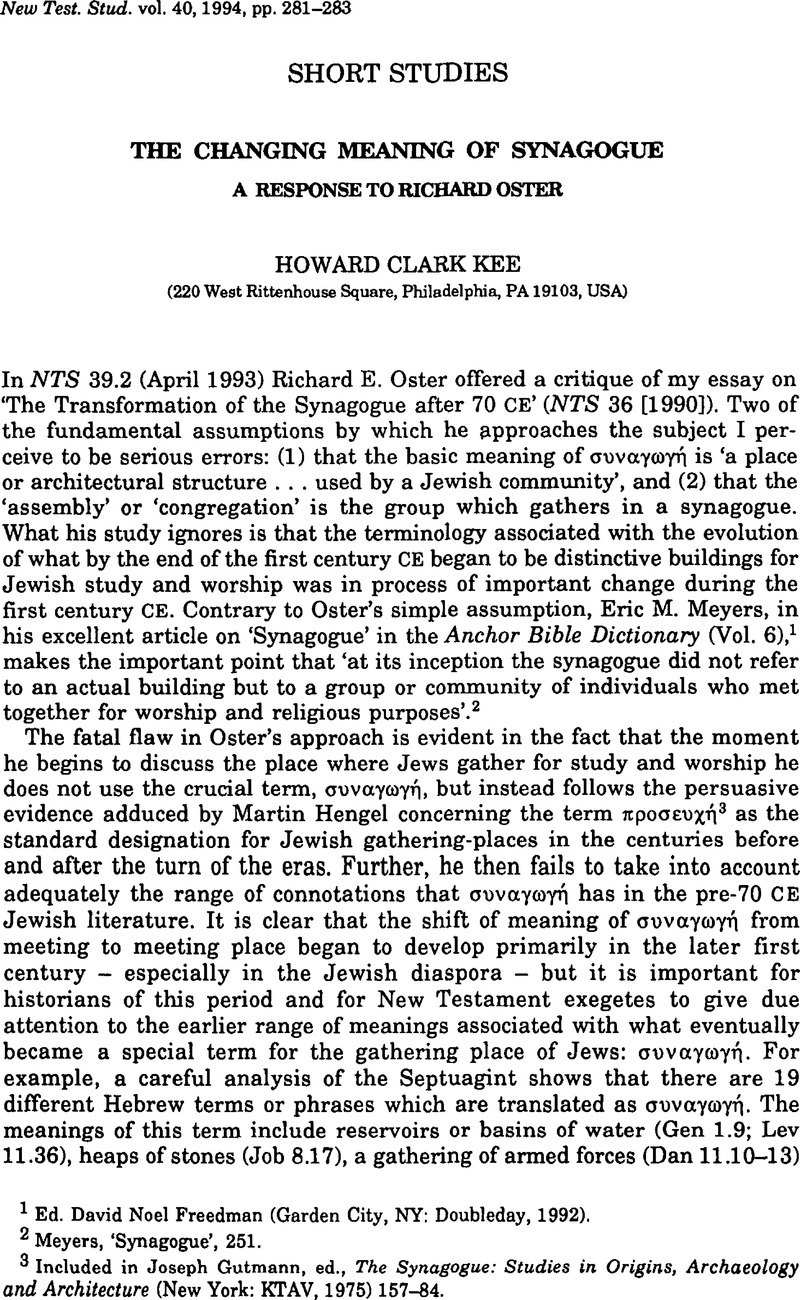Article contents
The Changing Meaning of Synagogue: A Response to Richard Oster
Published online by Cambridge University Press: 05 February 2009
Abstract

- Type
- Short Studies
- Information
- Copyright
- Copyright © Cambridge University Press 1994
References
1 Freedman, Ed. David Noel (Garden City, NY: Doubleday, 1992).Google Scholar
2 Meyers, ‘Synagogue’, 251.
3 Included in Joseph, Gutmann, ed., The Synagogue: Studies in Origins, Archaeology and Architecture (New York: KTAV, 1975) 157–84.Google Scholar
4 In this connection Philo several times quotes the LXX of Num 27.16–17, where the gathered community of God's people is compared with a flock of sheep (On the Posterity of Cain 67.5, 7; On Agriculture 44.6, 7).
5 In Questions on Genesis 2.6.
6 As in the case of the Essenes, in Every Good Man Is Free 81.
7 In The Embassy to Gaius 312.
8 To Gaius 156.
9 Every Good Man Is Free 81.
10 Antiquities 14.258; Life 2.276; 280.3; 293.4. Even Moses is said to have erected prayer houses (Apion 2.10).
11 Antiquities 1.10; 15.346.
12 Antiquities 19.300–5; Wars 2.289; 7.44.
13 A vulnerable and unwarranted assumption, which goes back to Deissman, A., in Light from the Ancient East (English translation: New York, 1927) 439–41.Google Scholar
- 3
- Cited by




